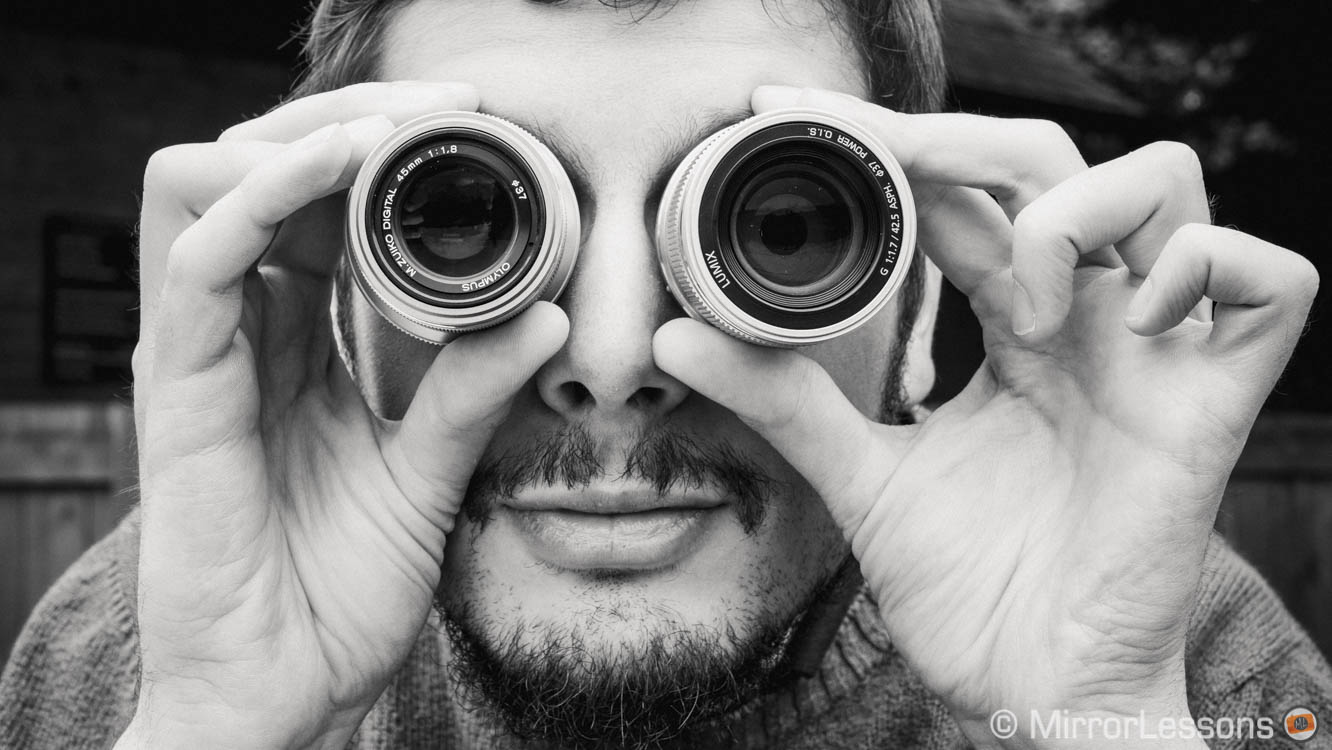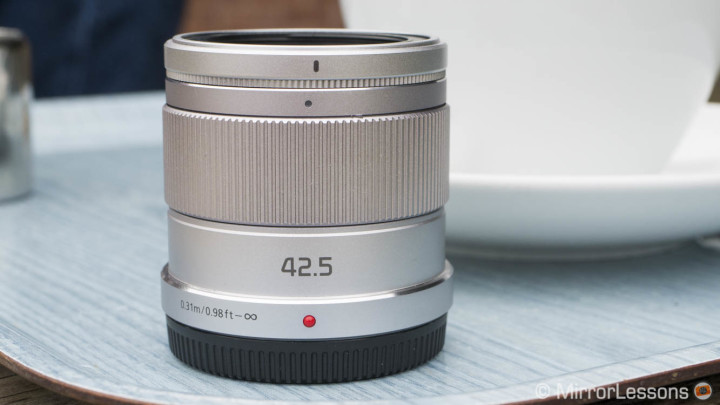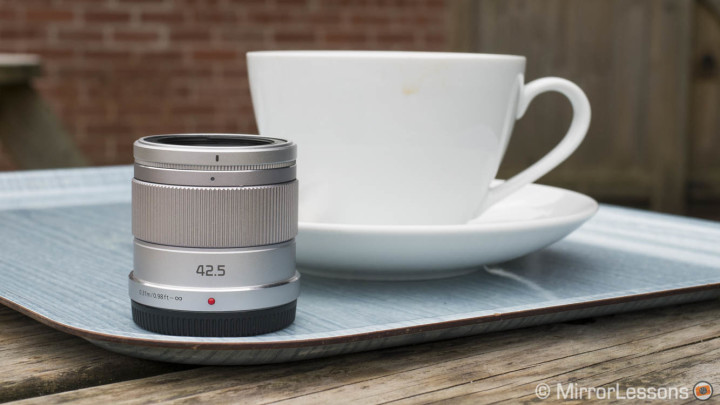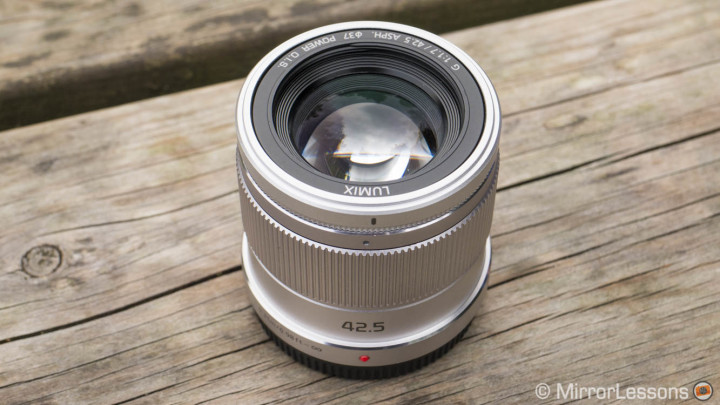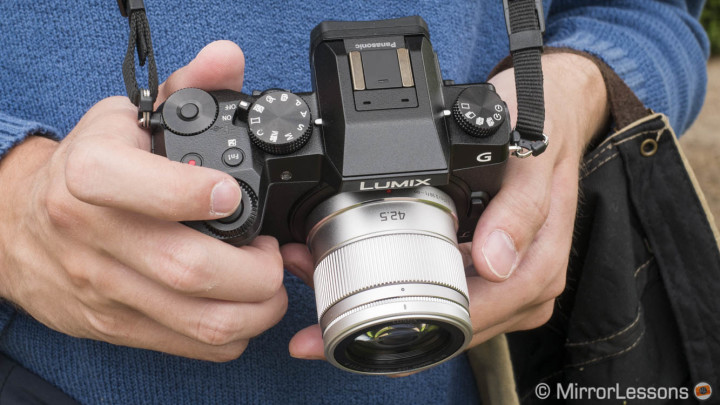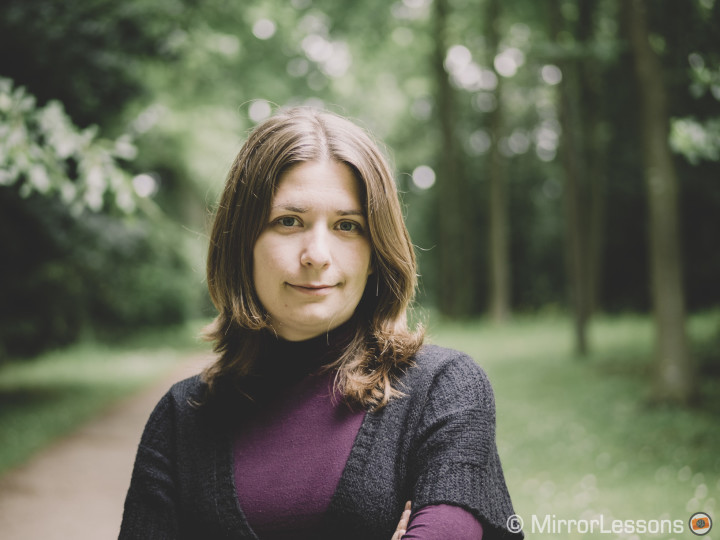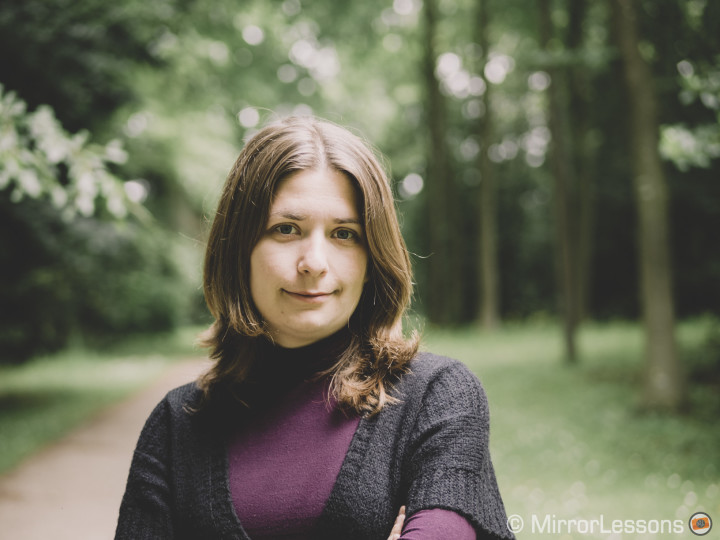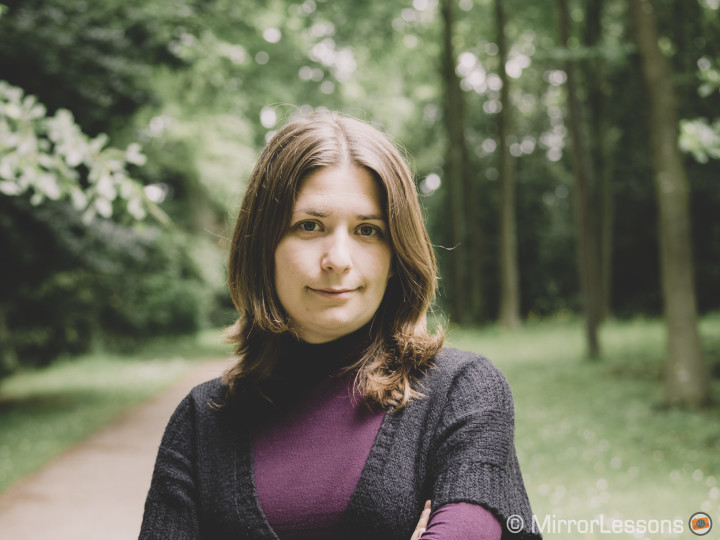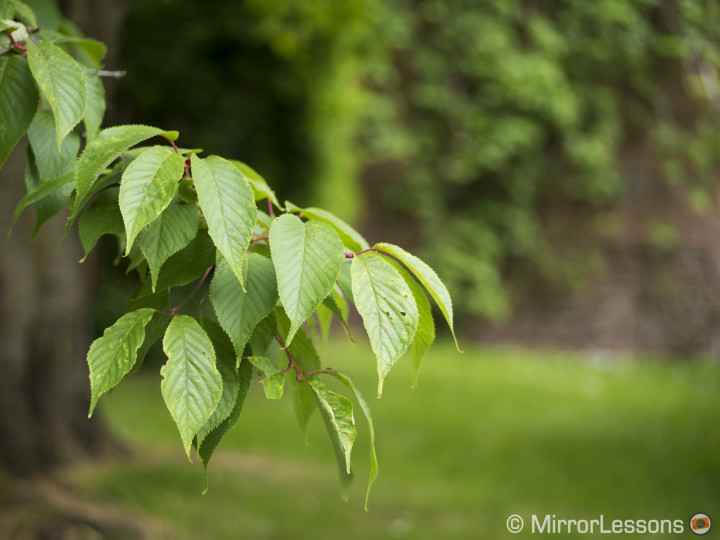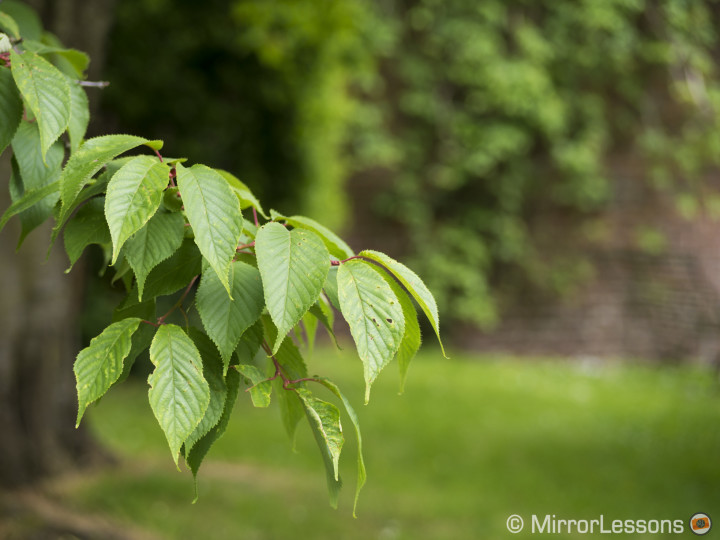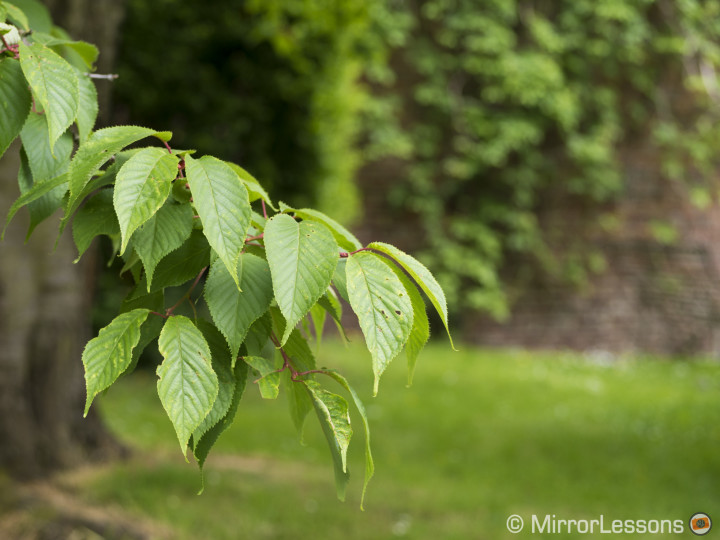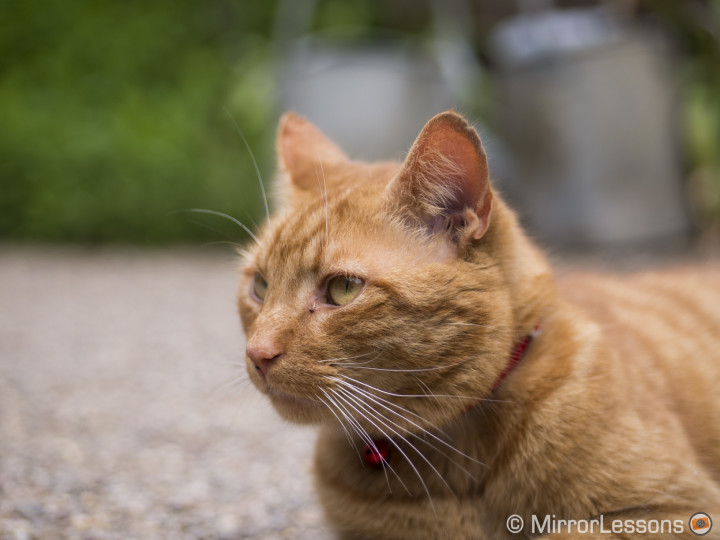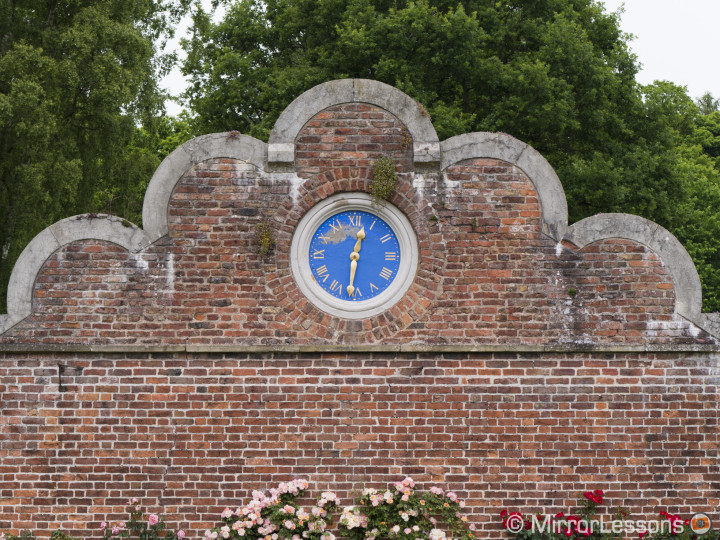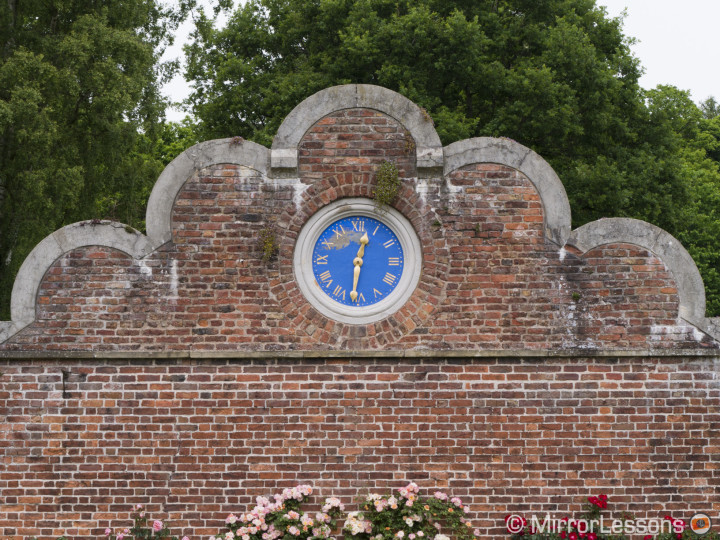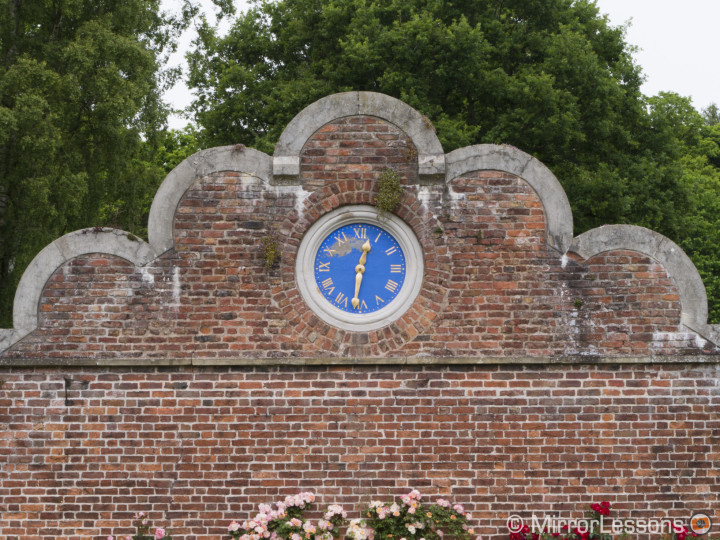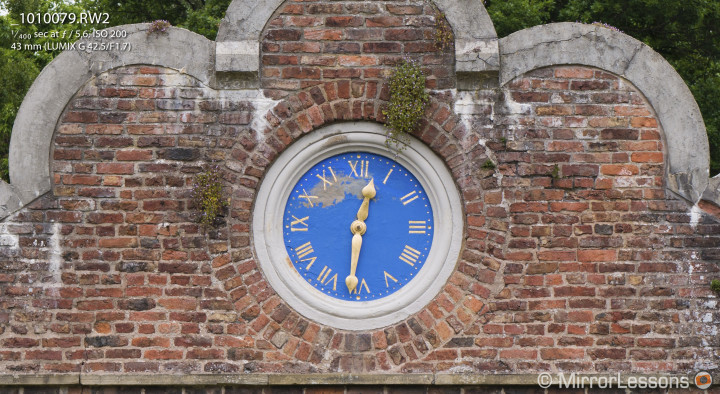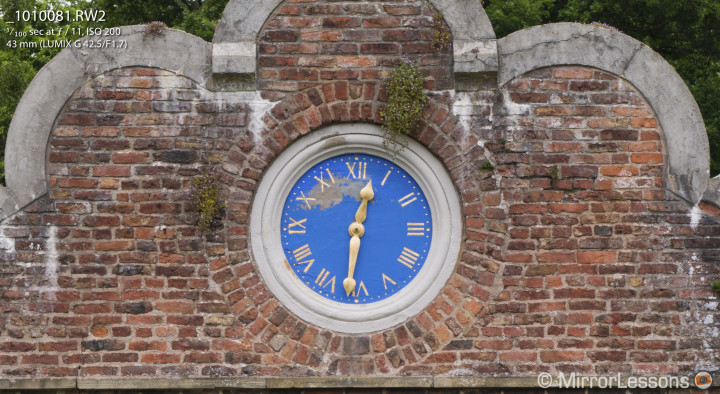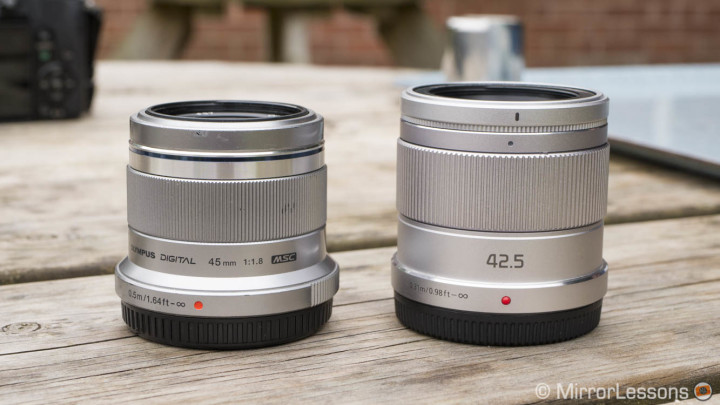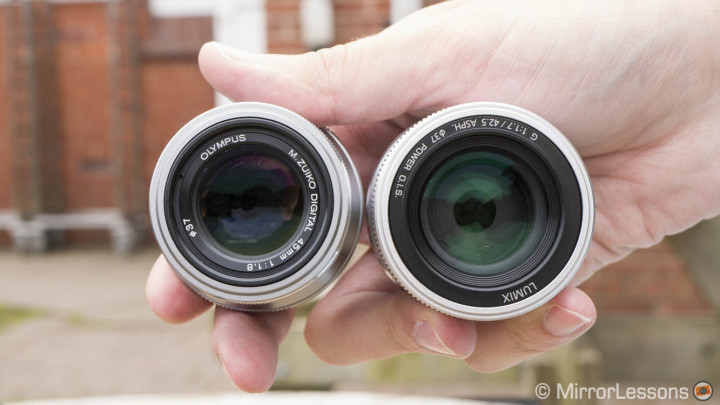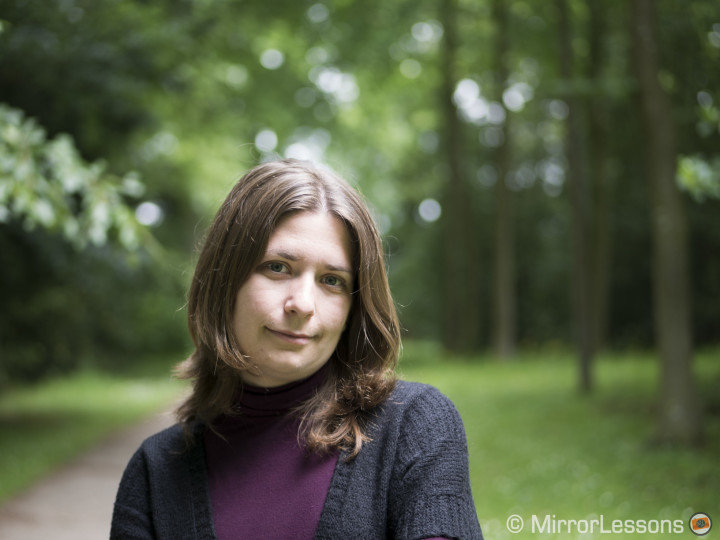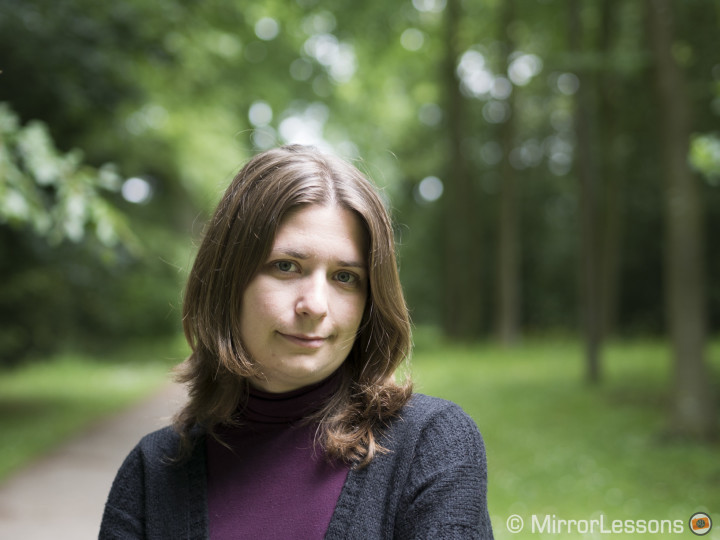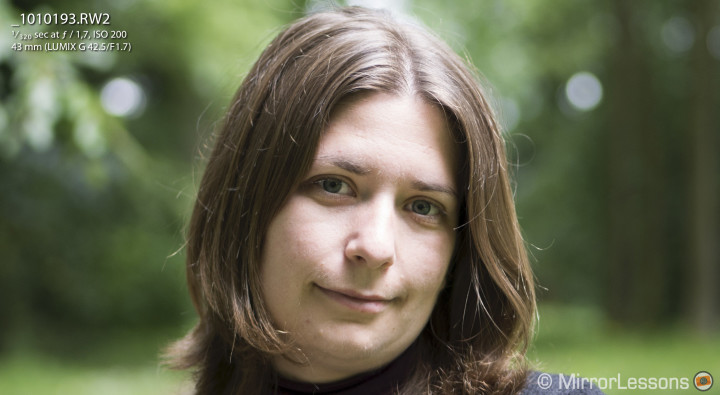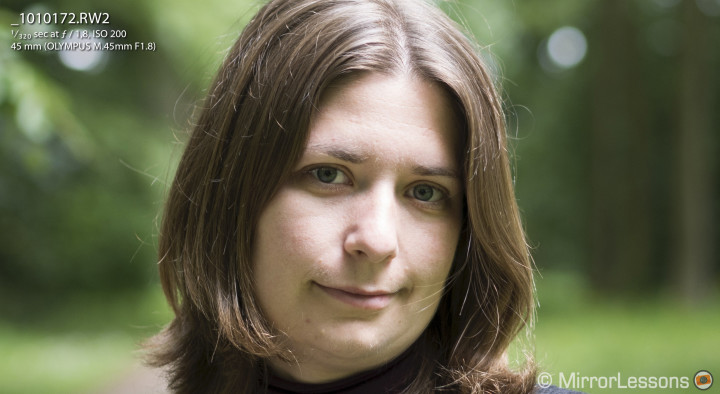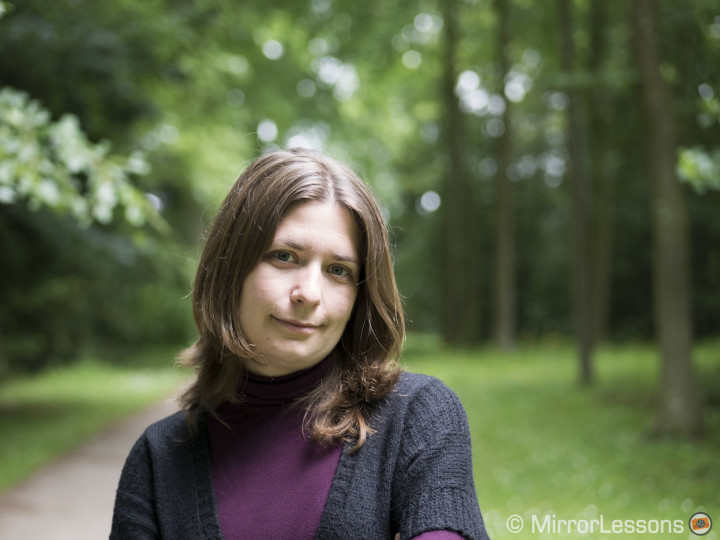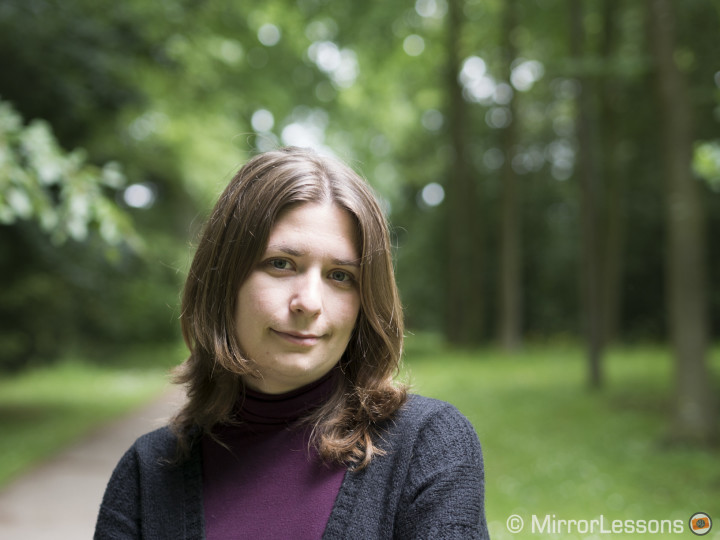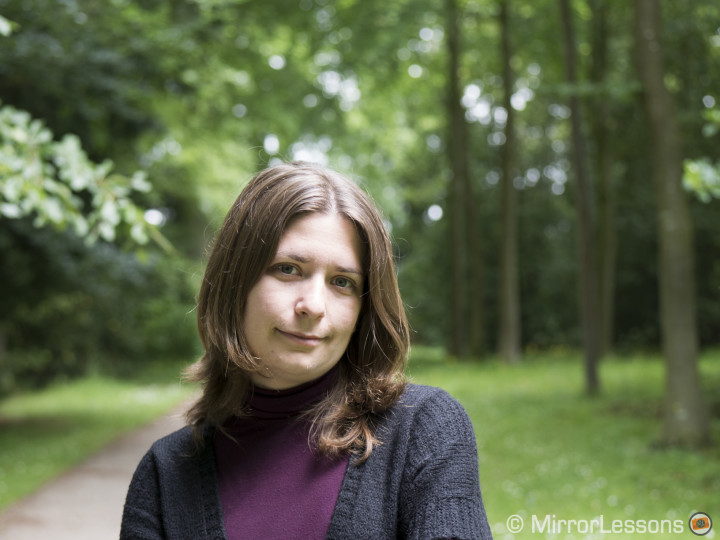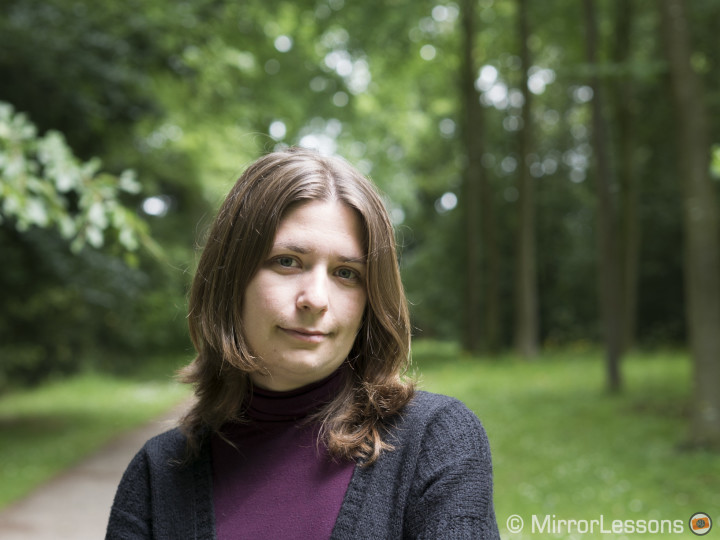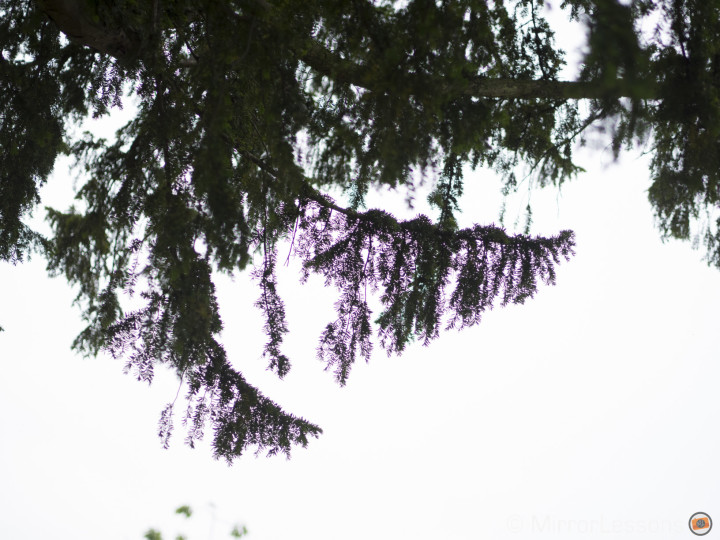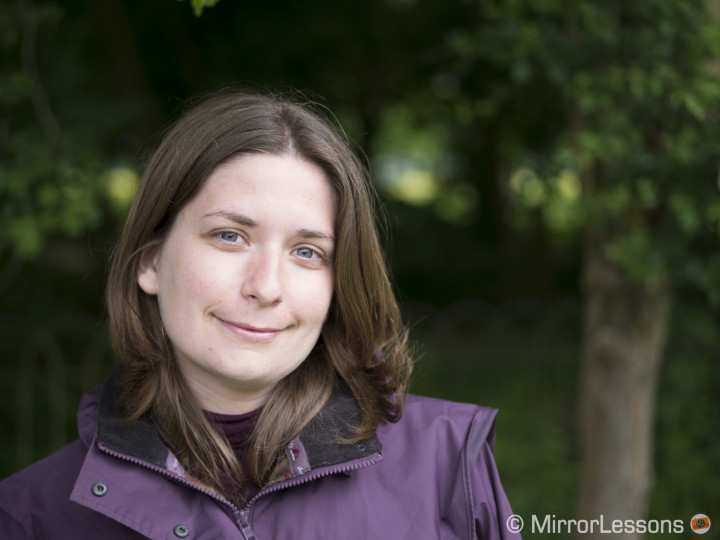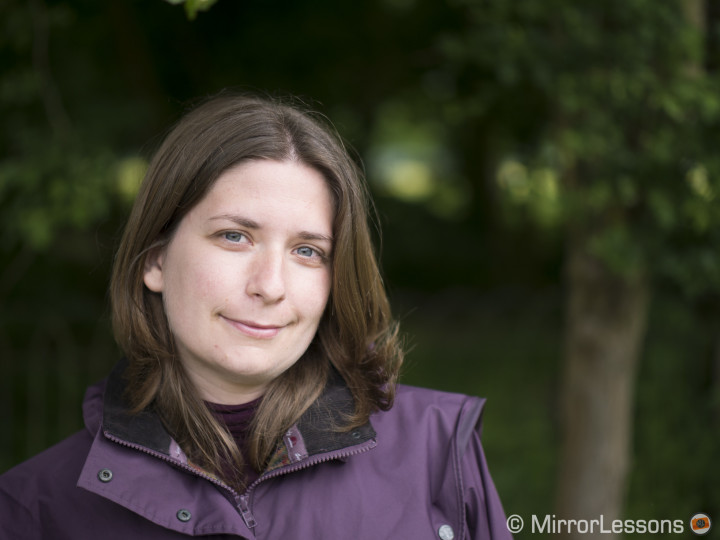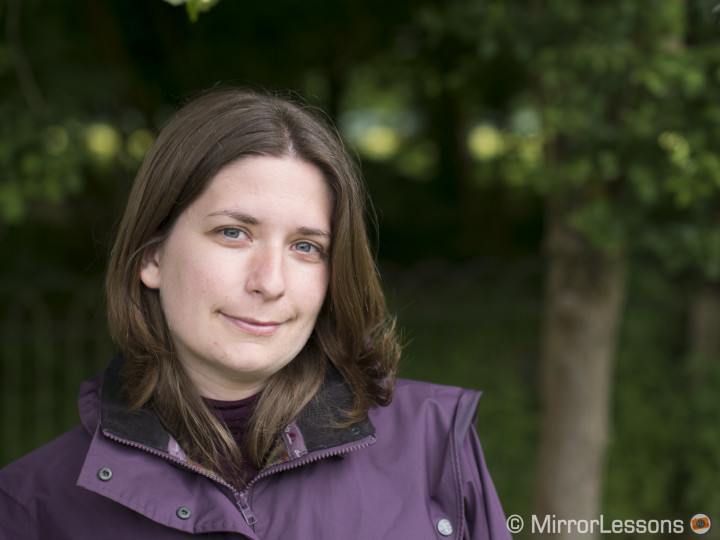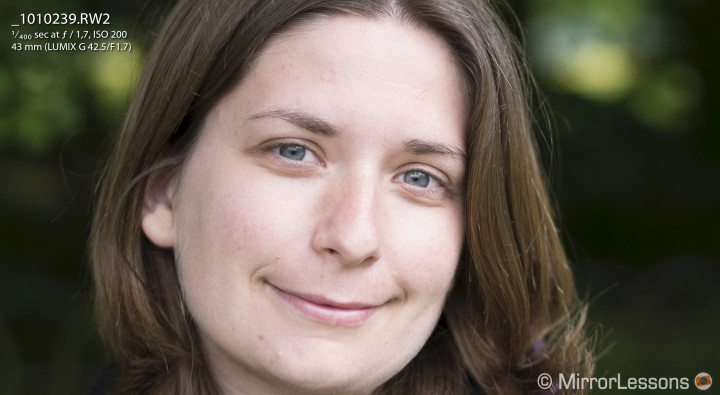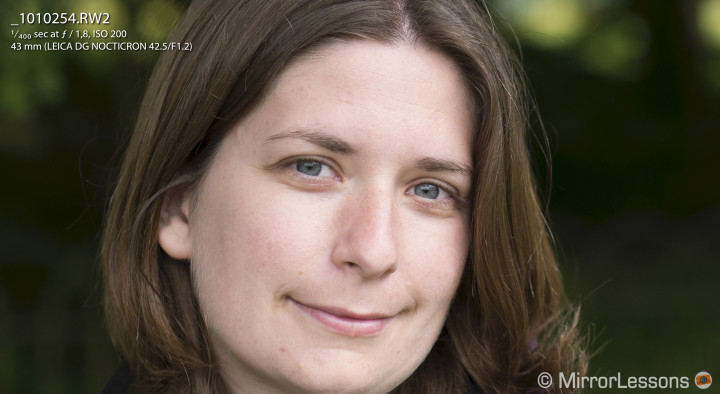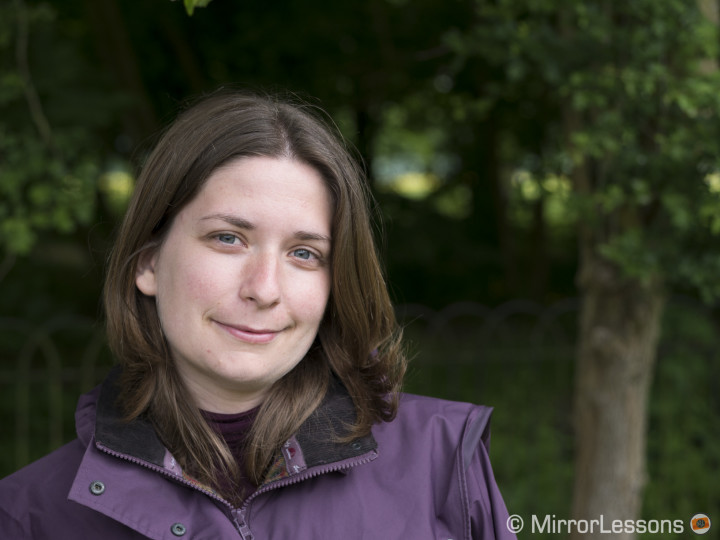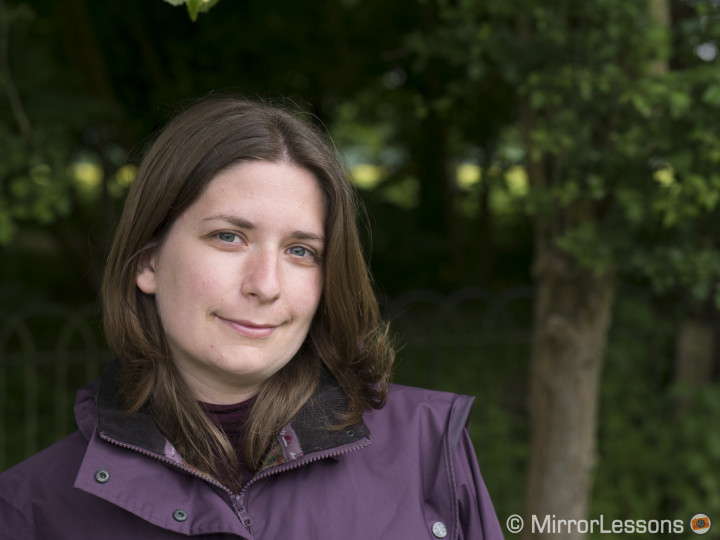While Heather spent her time testing the new Panasonic G7 at the Erddig National Trust site, I concentrated on the new Lumix 42.5mm f/1.7 lens. As with the G7, this can also be categorised as a mini-review. My time spent with the lens wasn’t any longer than an afternoon but enough to write more than I did for our hands-on review from the UK Photoshow in March.
This lens embodies what I love about the Micro Four Thirds system: compactness without sacrificing image quality. Like the Olympus 45mm before it, this is yet another lens that can find a place in any bag, big or small, and whose performance as a portrait lens won’t let you down. Since I also own the M.Zuiko version, I couldn’t pass up the opportunity to take some comparison shots to see if there was a relevant difference between the two. And while I was at it, I also took a few comparison shots with her majesty, the Nocticron 42.5mm f/1.2.
Is the Lumix 42.5mm f/1.7 the new affordable reference for MFT portrait photographers? Let’s find out!
Panasonic Lumix 42.5mm f/1.7 ASPH POWER O.I.S. Main Specs
- Focal length: 42,5mm
- Focal length (equiv. 35mm): 85mm
- Maximum aperture: 1.7
- Minimum aperture: 22
- Number of aperture blades: 7 rounded blades
- Angle of view: 29°
- Closest focusing distance: 31cm
- Lens configuration: 10 elements / 8 groups
- Special elements: 1 Aspherical
- Lens surface coating: None
- Maximum image magnification: 0.2x / 0.4x (35 mm camera equivalent)
- Optical Image Stabilizer: Yes (POWER O.I.S.)
- Dimensions: φ55 Ø, 50 mm
- Filter diamater: 37mm
- Weight: 130g (excluding lens cap, lens rear cap, lens hood)
Note: the 42.5mm f/1.7 sample was a pre-production model but fully functional. It was available for people to try at the National Trust event held by Panasonic.
Design and ease of use
The first thing you appreciate about the Lumix 42.5mm 1.7 is that it has a metal surface, the lens mount included. Though it’s not really expensive, it doesn’t feel at all cheap. There aren’t any controls on the lens body except for the focus ring that of course is “fly-by-wire”. It is nice to use in manual focus mode but won’t give you the same pleasant experience as other lenses. A plastic hood is included in the box, which you mount by removing the decorative ring on the front of the lens. (It too is made of plastic.) The lens is available in either black or silver. It is very light (130g) and would be perfectly balanced on any Micro Four Thirds body you can think of.
Through the lens: Image quality
As with any fast aperture lens, the first thing to check is how it performs at the fastest aperture, which in this case is f/1.7. Thankfully there aren’t any negative surprises here: sharpness is already very good at f/1.7 and vignetting is almost absent.
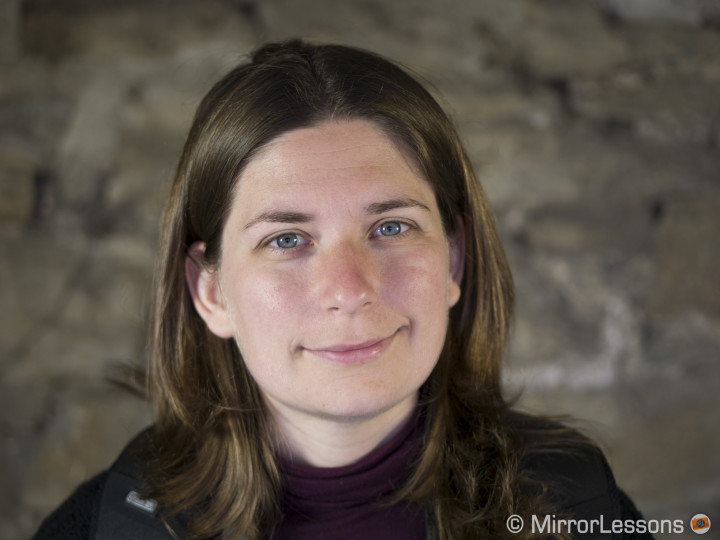
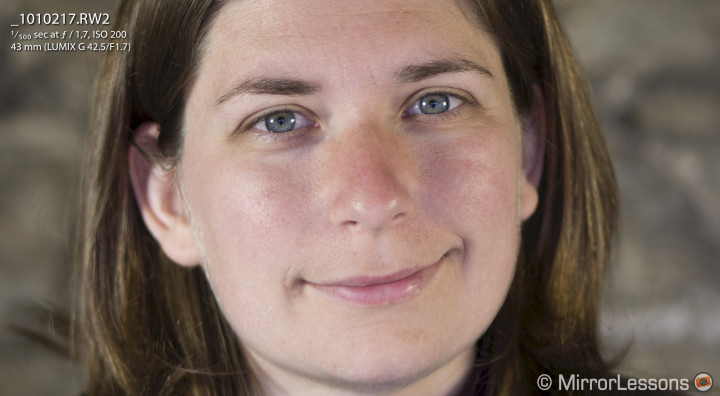
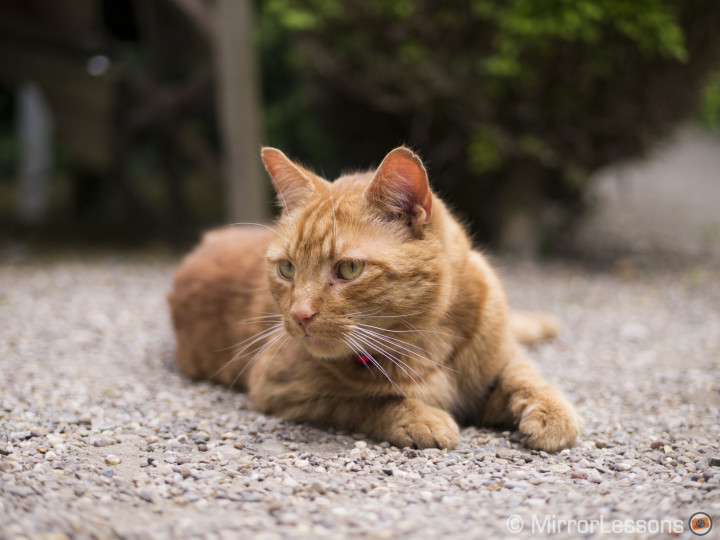
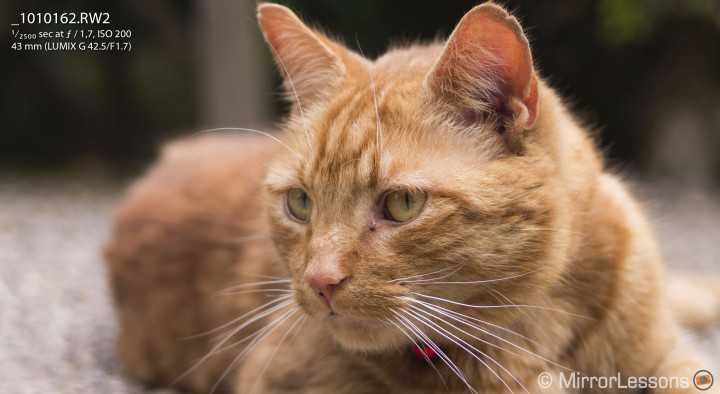
Being mainly designed for portraits (it offers the equivalent of 85mm on the 35mm format which is the classic portrait focal length) the other important aspect to consider is the bokeh rendering. With enough distance between your subject and the background, you can achieve pleasant and not too distracting bokeh from f/1.7 to f/2.8. The lens renders almost perfectly rounded out of focus areas.
Note: I post-processed the colours in the examples below because all the greens and the lack of sunlight produced some unpleasant greens on the skin. I should have picked another spot!
When the background is closer however it can appear a little less pleasant and has stronger edges especially at f/2 or f/2.8.
A nice characteristic of this lens are its close focusing capabilities (31cm), which expand the lens’ versatility not only for headshots but also for details.
Concerning overall sharpness, the best performance is found between 2.8 and 5.6. The corners are softer at the fastest aperture and get better from f/2.8 onward. From f/8 and especially f/11 some diffraction starts to appear and becomes more relevant at f/22. I am not saying anything new here as most Micro Four Thirds lenses behave in the same way.
Given the cloudy and partially rainy day, I couldn’t test the flare resistance capabilities of this lens. I especially wanted to see if some purple fringing would appear like on many other Micro Four Thirds lenses. I noticed some in low light with artificial light sources like in the picture shown below.
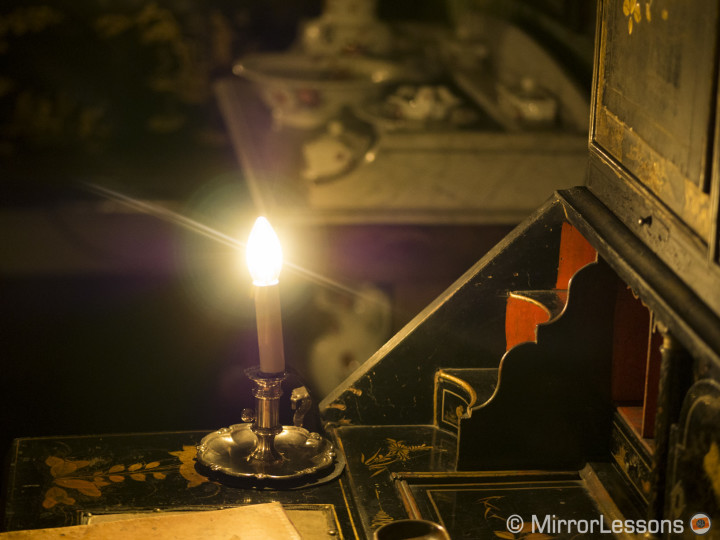
I found some traces of chromatic aberration at the fastest apertures in images with strong contrast like the picture below. It is present in both the JPG and Raw versions. However it is easily removable in Lightroom.
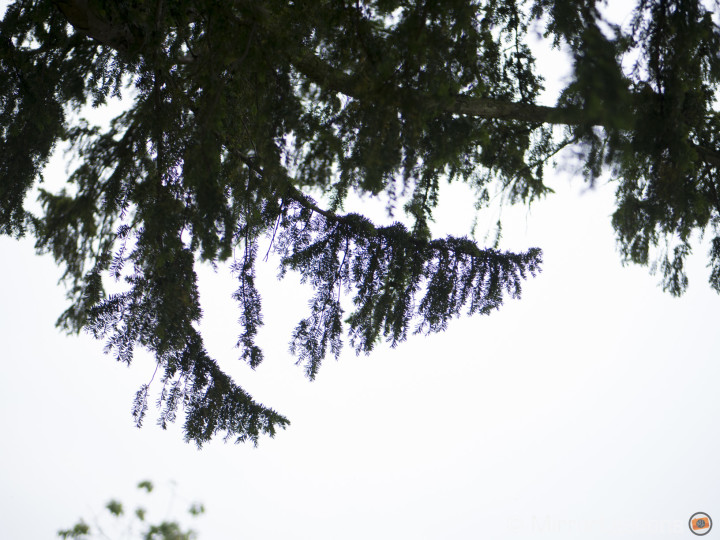
Autofocus and performance
The autofocus is really fast with this lens at short and long distances. On Panasonic bodies like the new G7, I didn’t come across any flaws in either AF-S or AF-C. I briefly tested it on the Olympus OM-D E-M1 as well and I didn’t notice a decrease in performance. The AF motor is silent as well.
For video I noticed a decrease in speed with the G7 when set to continuous autofocus. After the first attempts I found it easier to switch to manual focus and use the excellent peaking of the camera.
The lens includes optical stabilisation which will suit Panasonic cameras that doesn’t include on-sensor stabilisation best. The Power OIS of the Lumix 42.5mm is quite good. I found the limit to be around 1/5s hand-held which is quite good considering the medium telephoto focal length.


The lens with its O.I.S. works well for video and 4K shooting too. You can check out some samples at the beginning of our G7 hands-on video below.
Panasonic 42.5mm f/1.7 vs. Olympus 45mm f/1.8
The Olympus 45mm f/1.8 has long been considered the best “bang for the buck” Micro Four Thirds users can get, and it still is in my opinion. Since it isn’t a recent release anymore, you can find it for a very attractive price. For what you pay, you get image quality that is far superior to what it should be. The new Panasonic 42.5mm f/1.7 enters in direct competition with this Olympus lens but being more recent, it suffers from the disadvantage of being more expensive (around $100/150 more). However it has a few characteristics that can partially justify the higher price.
From a build quality point of view, the Panasonic lens is slightly larger and made of metal while the Olympus lens is made of plastic. The paint that covers the 45mm lens can easily chip off or wear away with extreme use, while the 42.5mm definitely has a more premium feel. What’s more, the 45mm doesn’t come with a lens hood, which is a shame. Both lenses are available in black or silver. The 45mm is slightly less heavy but both feel really light in the hand.
The Lumix lens also includes optical stabilisation while the 45mm doesn’t. The former is thus more compatible with Panasonic bodies that lack IBIS than the Olympus version.
What about image quality? They have a slightly different focal length but those 2.5mm of difference aren’t that relevant in my opinion. On paper, the difference between 1.7 and 1.8 is also negligible. Both lenses offer good performance wide open but the Olympus lens seems to be slightly sharper. I performed the test with both the G7 and E-M1 and I haven’t found a considerable differences between the two cameras. The lenses behave the same on both bodies.
Regarding bokeh, the Olympus 45mm has slightly bigger out of focus circles but that is also due to the slightly longer focal length. Otherwise I find the rendering very similar here as well. Both lenses offer more sharpness from f/2.8 onward.
In the close focusing capabilities department, the Lumix has a clear advantage since it can focus 20cm closer than the M.Zuiko lens. Both lenses maintain good sharpness at their respective shortest focus distances.
Chromatic aberration also seems more pronounced with the 45mm at the fastest aperture. Again, that is nothing that you can’t correct or at least reduce easily with post production.
Panasonic 42.5mm f/1.7 vs. Nocticron 42.5mm f/1.2
Of course I couldn’t resist taking an additional set of comparison shots with the Nocticron 42.5mm f/1.2, currently the best portrait lens for Micro Four Thirds in terms of image quality. But the Nocticron is larger, heavier and more expensive (3 times the price of its little brother). The Leica designed lens also has a stronger build, comes with a metal lens hood and has a nice aperture ring that works on Panasonic bodies only.
But is the difference in image quality that relevant? Is the 1Ev advantage in aperture that significant?
I took a final series of portraits with the two Panasonic lenses and the difference doesn’t immediately become apparent. In the first two pictures, I used the fastest apertures available for the two lenses and compensated exposure with the shutter speed. This shows the advantage the Nocticron has with a shallower depth of field and creamier bokeh but the difference is not huge. Sharpness is also very similar.
When the two lenses are used at the same aperture, the Nocticron starts to have a noticeable advantage concerning sharpness at f/1.8 and f/2.8. It also has a slightly warmer colour rendering. Interestingly, the bokeh rendering is quite similar.
Conclusion
The Panasonic 42.5mm f/1.7 is yet another nice addition to the Micro Four Thirds system, even if it wasn’t a focal length that was missing in the lens line-up. The differences between it and the M.Zuiko 45mm are more related to the build quality and optical stabilisation than the optical quality.
The 42.5mm f1.7 defends itself quite well against its big sister, the Nocticron 42.5mm f/1.2, although the latter has more sharpness.
I would say that this is a lens worth considering if you have a Panasonic camera and can make use of the optical stabilisation. Otherwise, the Olympus 45mm is still a valid lens and you can find it for less money. The Nocticron is aimed at a professional audience and I would only consider it if you shoot portraits for a living.
 What I like about the Panasonic 42.5mm f/1.7:
What I like about the Panasonic 42.5mm f/1.7:
- Good sharpness at 1.7
- Good bokeh rendering
- Excellent optical stabilisation
- Nice close focussing capabilities
 What I don’t like about the Panasonic 42.5mm f/1.7:
What I don’t like about the Panasonic 42.5mm f/1.7:
- More expensive than the direct competitor, the Olympus 45mm
- Autofocus is slower when recording video
If you would like to test drive a Lumix camera for yourself, why not attend one of Panasonic UK’s National Trust events. The full list of events can be found on the official Panasonic website, and are being held throughout the summer in various locations across the UK.
